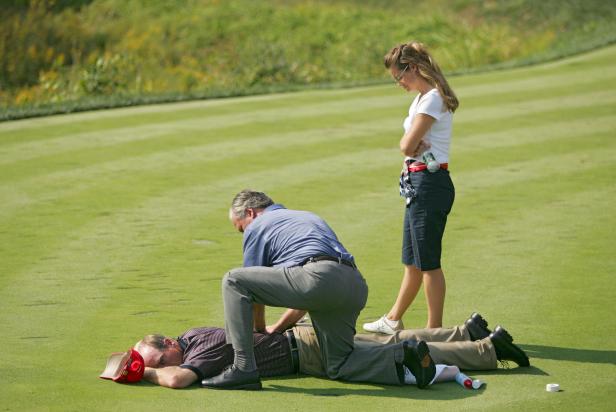Golf can be a physically demanding sport, leading to injuries such as pulls, tears, bruises, and inflammation. In order to address these issues, there are a variety of treatments available, ranging from simple self-care techniques to more advanced medical interventions. It is always important to consult with a doctor before trying any of these treatments to ensure they are appropriate for your specific situation.
One common treatment for sore muscles and joints is the use of heat and cold therapy. Applying extreme cold can help reduce inflammation, while heat can increase blood flow and accelerate healing. However, it is important to use these therapies carefully, as they can cause burns if left on the skin for too long. Additionally, ice is typically more effective in the first 72 hours following an injury, while heat might exacerbate swelling.
Foam rolling, also known as myofascial release, is another popular technique for treating sore muscles. By applying pressure to stiff or tight areas, blood flow and range of motion can be improved. However, it is important to avoid applying pressure directly to areas of sprains or bruises, as this can worsen the condition. In some cases, it may be necessary to seek the help of a professional therapist for hard-to-reach areas.
Dry needling is a treatment that involves the insertion of thin needles into painful trigger points in the muscles. This can help reduce pain and improve range of motion, particularly in areas that are difficult to reach with other therapies. However, dry needling should always be performed by a skilled professional, as it can cause soreness and bruising at the insertion sites.
Non-steroidal anti-inflammatory drugs (NSAIDs) such as ibuprofen and naproxen sodium are commonly used to relieve inflammation and pain. These medications are effective for minor issues and are easy to use. However, long-term use can lead to kidney and gastrointestinal damage, as well as cardiovascular issues. It is important to use NSAIDs cautiously and under the guidance of a healthcare provider.
Acetaminophen is another option for reducing pain, particularly in the short term. While it is less effective at reducing inflammation compared to NSAIDs, acetaminophen has been shown to have fewer side effects. It is important to avoid using acetaminophen with alcohol, as it can damage the liver. Combining acetaminophen with NSAIDs is more effective for some types of pain, but acetaminophen alone is generally preferred for musculoskeletal injuries caused by golf.
Steroids can provide rapid and strong relief for severe pain, but they should only be used under the supervision of a physician. Steroid injections, in particular, can be expensive and may cause tendon ruptures if used frequently. Some individuals may experience soreness at the injection sites following treatment. Low-level laser therapy is a non-invasive treatment option that has been shown to reduce tendon inflammation associated with golf-related injuries. This therapy is quick and painless, but it is typically used in combination with other treatments and may not be covered by insurance.
Class IV lasers are another type of laser therapy that can reduce pain and inflammation while promoting healing. However, this treatment must be administered by a medical professional and can be costly. Prolozone injections involve the injection of a mixture of saline and ozone to reduce inflammation in specific areas of the body. While this treatment has been effective for certain conditions, it is important to consult with a physician before undergoing this procedure and to be aware of the associated costs.
Extracorporeal shockwave treatments use high-energy acoustic waves to stimulate tissue healing in chronic injuries. This treatment is typically performed in conjunction with a physical therapy program and may be costly. Platelet-rich plasma injections involve the extraction of platelets from the patient’s blood and subsequent injection into areas of injury. While this treatment has been effective for joint injuries and arthritis, it is not typically used for muscle or tissue soreness and can be expensive.
Cold plunges have been shown to reduce inflammation, stress, and aid in recovery from soreness. Submerging in water colder than 50 degrees for short periods of time several times a week can have beneficial effects. This treatment is simple, inexpensive, and safe, but it is important not to stay in cold water for too long to avoid adverse effects. Ultimately, finding the right treatment for golf-related injuries requires consideration of individual needs and preferences, as well as consultation with a healthcare provider.


